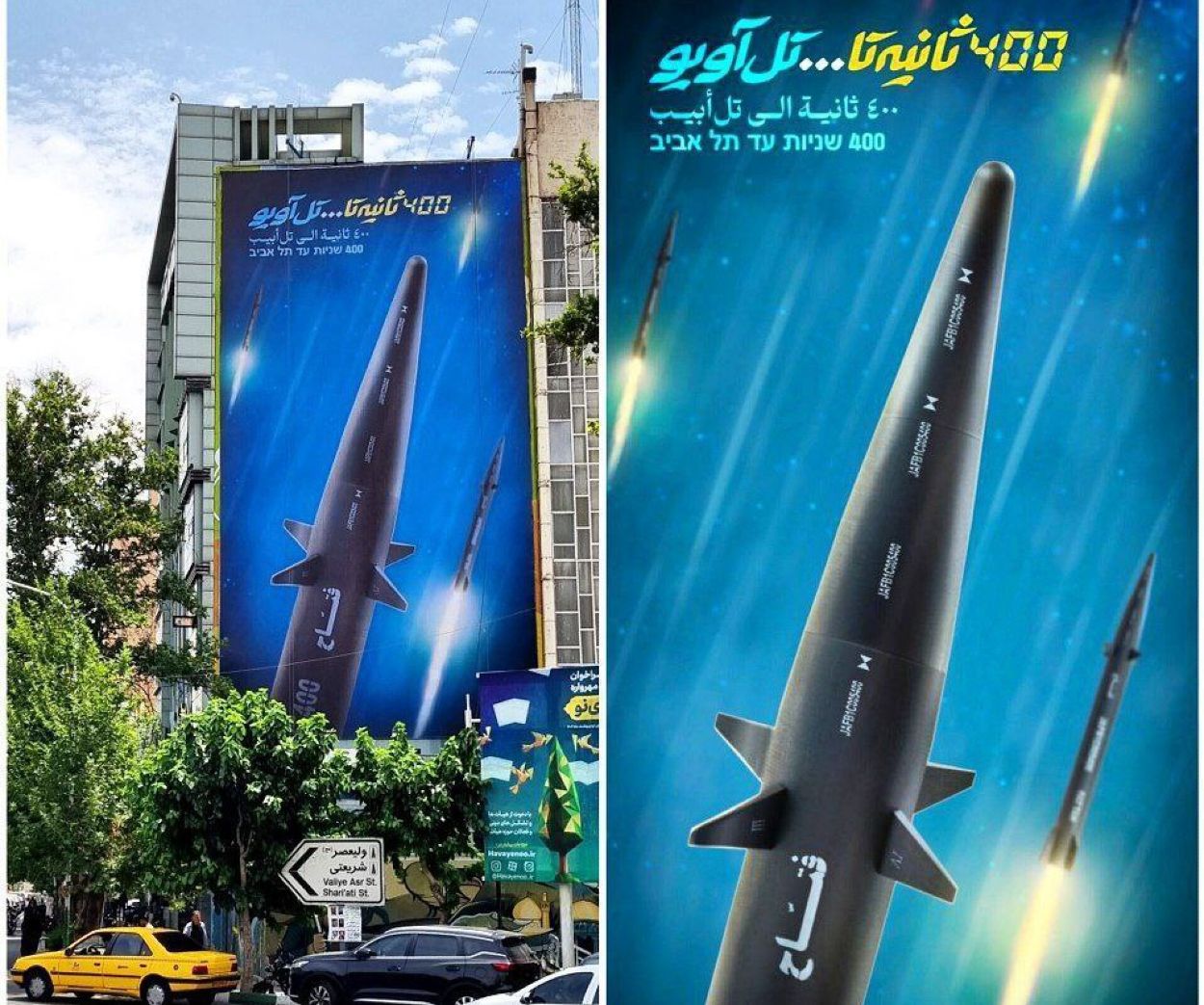After the massive aerial strike launched by Iran on Israel directly from its soil, there are claims that Tehran also employed hypersonic missiles that allegedly hit all its designated targets, bypassing Israel’s cutting-edge air defense systems.
Every hypersonic missile fired by Iran in retaliatory strikes against Israel has successfully struck its targets after dodging the air defense systems of the country, Iran’s state news agency Press TV claimed a day after the overnight attacks launched by Tehran.
The report stated that the Islamic Republic of Iran used hypersonic weapons against real targets for the first time when it launched massive missile and drone strikes on what it called “occupied territory.”
The strikes, dubbed Operation True Promise, were carried out by Iran’s Islamic Revolution Guards Corps (IRGC) and inflicted damage on Israeli military bases.
Press TV was informed by sources that none of Iran’s hypersonic missiles were intercepted by the Israeli regime or its allies. However, the reports stopped short of naming the hypersonic missiles in question. The sources further underlined that Iran is one of the few nations with the technology to develop hypersonic missiles, which can strike targets precisely while traveling at astounding speeds.
The claims about the use of hypersonic weapons could not be independently verified by the EurAsian Times. When asked whether Iran actually used a hypersonic missile, a Middle-East expert told the EurAsian Times, “They seem to have meant Kheibar Shekan (ballistic missile) when they said hypersonic.”
Major General Mohammad Baqeri, the chief of staff of the Iranian Armed Forces, announced on April 14 that Israel’s Nevatim Airbase, from where an F-35 aircraft took off to bomb Iran’s diplomatic facilities in Damascus, was hit by Iran, along with another large intelligence base located inside Israel.
He continued by saying that the strikes “reached its goals” since the Iranian drones and missiles were not adequately intercepted by the regime’s “Iron Dome” system. The IRGC was responding to an earlier April missile attack by Israel on Iran’s diplomatic buildings in the Syrian capital of Damascus.
It was the biggest drone strike ever executed by any nation, and it was Iran’s first frontal assault on Israel in over fifty years of enmity.
The Israel Defense Force (IDF) claims that 350 Iranian drones and missiles were fired against Israel during the night, and the warheads of these missiles and missiles combined carried 60 tons of explosives.
Iran launched some 120 ballistic missiles, 30 cruise missiles, and 170 drones at targets in Israel Friday night, according to the IDF, which had earlier stated that 99 percent of the missiles were shot down, the great majority of them did so before they even reached Israeli airspace.
Footage showing Members of the Israel Defense Force earlier today Removing the Fuselage of a Iranian “Emad” Medium-Range Ballistic Missile from the Sea of Galilee, after it was Shot Down during Saturday Night’s Attack. pic.twitter.com/vZeV1lflEq
— Politics World Wide Web (@PoliticsWWWeb) April 15, 2024
Iran has not published the names of drones and missiles used against Israel in the operation. However, images that surface on social media displaying sections of those missiles that were shot down or otherwise missed their targets indicated some of the ballistic missiles used by Iran included Emad, Ghadr-110, Dezful, as well as a Kheiber Shekan, all of which are medium-range ballistic missiles.
Israel said it intercepted 99% of drones and missiles and celebrated the effectiveness of its defenses against an unprecedented Iranian strike. All of the UAVs and cruise missiles were shot down, military spokesman Daniel Hagari said, while a few ballistic missiles got through Israel’s defenses.
As for hypersonic missiles, they are believed to be more challenging to intercept given their maneuverability and unexpected trajectory. However, the experience gained from the battle in Ukraine, where Kyiv claims to have intercepted multiple Kinzhal aeroballistic missiles, has shown the weapons are not invincible.
Hypersonic missiles are capable of overcoming various kinds of air defense systems by performing a variety of maneuvers in and out of the Earth’s atmosphere. In fact, Israel claims that it made an exoatmospheric intercept of a missile. Exoatmospheric interception is the process of intercepting a missile outside of the atmosphere, which is located around 100 kilometers above sea level.
However, there is no confirmation from Israel or its allies about intercepting an Iranian hypersonic missile.
Iran’s Hypersonic Missile
Iran unveiled its first-ever hypersonic missile, Fattah, in June 2023. It claims it can penetrate all enemy missile defense systems.

Iranian media reports have stated that the missile can reach a maximum speed of Mach 15 (5,145 meters or 16,880 feet per second), has a range of 1,400 kilometers (870 miles), and travels at a high maneuverability thanks to the use of solid propellants.
The missile’s name, reportedly chosen by Supreme Leader Ayatollah Ali Khamenei, roughly translates to “to make victorious.” The unveiling of the missile was passed off as a historic ceremony, as Iran allegedly became the first country in the entire Middle Eastern region to wield a hypersonic weapon that moves at more than five times the speed of sound.
Although International military experts have questioned Iran’s assertions that Fattah is a hypersonic missile, calling it an attempt at disinformation, Tehran erected a provocative billboard in Tehran a few days after the launch of the said missile. It featured the Fattah hypersonic missile and a chilling message that reads, “400 Seconds to Tel Aviv,” directly threatening Israel’s largest city.
Iran’s latest claims about hypersonic strike are in line with previous assertion made by Iran’s state TV that the hypersonic missile can bypass even the most advanced anti-ballistic missile systems of the United States and the “Zionist regime,” including Israel’s Iron Dome defense system.
While the world was still reeling with the information about the potential presence of a hypersonic weapon in Iran, the country showed off another hypersonic missile codenamed Fattah-2 a few months later, in November 2023.
According to Iranian official media, Fattah-2 is a hypersonic glide vehicle (HGV). Compared to a ballistic warhead that travels in a more foreseeable arc, an HGV offers significantly greater mobility as it glides to its target after initial launch. Pro-Iran military watchers touted the introduction of a second and more potent hypersonic missile within months of unveiling the first as an exceptional feat.
However, since Western and Israeli officials rarely take Iranian claims seriously, they have continued to brush off reports that Tehran has indeed developed a hypersonic weapon – a capability that remains out of bounds for several technologically advanced militaries.
- Contact the author at sakshi.tiwari9555(at)gmail.com
- Follow EurAsian Times on Google News




